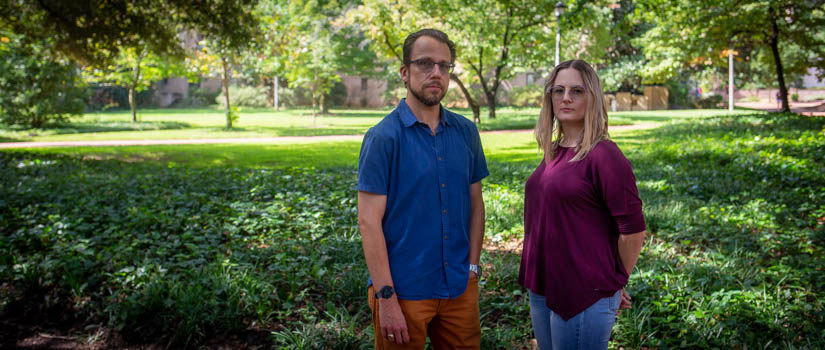If you’re trying to defend against a nuclear attack, you want a sociologist in your corner.
Physicists can calculate the power and range of a blast and how far radiation could spread. Engineers can predict physical damage to infrastructure, and computer scientists can create simulations from those calculations. But none of that will tell you how humans will respond. Who will fight and who will flee? Who will disconnect? Who will come to work the next day?
University of South Carolina sociologist Matthew Brashears is helping answer questions like those for the Defense Threat Reduction Agency, a Department of Defense unit tasked with countering weapons of mass destruction. In collaboration with Applied Research Associates, Inc., and researchers at George Mason University, Brashears is contributing to a forecasting model to help the DTRA understand what would happen if a small nuclear bomb exploded in an American city.
Whether it’s caused by a terrorist group or an accident, Brashears says preparing for such a disaster depends on evidence-based social science.
“Disaster simulations tend to analyze it from a purely engineering standpoint, the physical part of the technical system," Brashears says. “But if you look at serious accidents, like Three Mile Island, Chernobyl or Fukushima … it's not just the technical system that fails, but there’s some part of the social system that fails.
“Similarly, when accidents were averted, it's not uncommon that human action was a component of that.”
Regular, private citizens tend to be the first responders. The people who are supposed to be panicking actually have their act together.
— Matthew Brashears
The project also applies to other life-disrupting disasters, says Victoria Money, a social psychology doctoral student working with Brashears on the project.
“It’s less about the actual threat being a nuclear explosion or bombing,” she says. "Rather, it’s about the underlying mechanisms of human behavior, with the situation being a threat in general.”
For the DTRA contract, Brashears and Money are analyzing how infrastructure would hold up after a blast. It’s one thing to know how many power lines would be knocked down, but it’s another to know how many power plant employees and line workers would come to work to keep electrical systems running rather than rather than evacuate with their families or disengage in other ways.
“If either of those groups leaves, whatever infrastructure you have after this attack becomes inoperable pretty quickly,” Brashears says.
Fortunately, social science sometimes makes the picture look better than assumptions or pop culture would predict.
“During disasters, people don't tend to panic and freak out the way you might see it on television,” Brashears says. “Regular, private citizens tend to be the first responders. The people who are supposed to be panicking actually have their act together.”
It's not just the technical system that fails, but there’s some part of the social system that fails.
— Matthew Brashears
Money says that people in threatening situations usually want to protect themselves and others. After an initial fight, flight or freeze response, they look around to see who they can help. They look for someone to lead — or step forward themselves.
The DTRA project involves creating an agent-based model, a computer simulation of the decisions that individual agents could make in a situation and how those decisions affect other agents in the simulation.
“It's like every agent is playing a game of chess with every other agent they're interacting with,” Brashears says.
There are countless possibilities, and the intense computations of an agent-based model require tremendous amounts of time. But after running numerous simulations, the results can be used to create a shortcut model that can be applied to real-life situations. The DTRA contract is scheduled for three years.
Brashears and Money’s task is to use sociological theory to guide the project and ensure the simulated agents behave as closely to humans as possible. They will verify the outputs of simulations and tweak the model to make corrections. The result will be a computer program that the government can use to predict the aftermath of arbitrary attacks, Brashears says.
“It isn’t that we need to predict what each individual agent will do, but we need enough of the agents to behave in a way that is similar enough to the way real humans act that the model is accurate,” Brashears says. “We’re not going to predict everyone precisely, but we can generalize and know that this is what the world is going to look like.”
